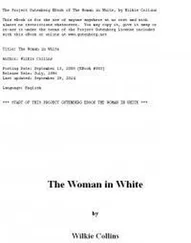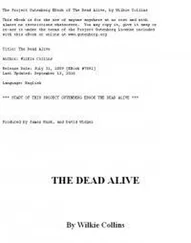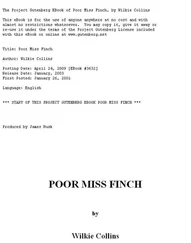Уилки Коллинз - Rambles Beyond Railways; or, Notes in Cornwall taken A-foot
Здесь есть возможность читать онлайн «Уилки Коллинз - Rambles Beyond Railways; or, Notes in Cornwall taken A-foot» весь текст электронной книги совершенно бесплатно (целиком полную версию без сокращений). В некоторых случаях можно слушать аудио, скачать через торрент в формате fb2 и присутствует краткое содержание. Год выпуска: 2009, Жанр: Классическая проза, на английском языке. Описание произведения, (предисловие) а так же отзывы посетителей доступны на портале библиотеки ЛибКат.
- Название:Rambles Beyond Railways; or, Notes in Cornwall taken A-foot
- Автор:
- Жанр:
- Год:2009
- ISBN:нет данных
- Рейтинг книги:4 / 5. Голосов: 1
-
Избранное:Добавить в избранное
- Отзывы:
-
Ваша оценка:
- 80
- 1
- 2
- 3
- 4
- 5
Rambles Beyond Railways; or, Notes in Cornwall taken A-foot: краткое содержание, описание и аннотация
Предлагаем к чтению аннотацию, описание, краткое содержание или предисловие (зависит от того, что написал сам автор книги «Rambles Beyond Railways; or, Notes in Cornwall taken A-foot»). Если вы не нашли необходимую информацию о книге — напишите в комментариях, мы постараемся отыскать её.
Rambles Beyond Railways; or, Notes in Cornwall taken A-foot — читать онлайн бесплатно полную книгу (весь текст) целиком
Ниже представлен текст книги, разбитый по страницам. Система сохранения места последней прочитанной страницы, позволяет с удобством читать онлайн бесплатно книгу «Rambles Beyond Railways; or, Notes in Cornwall taken A-foot», без необходимости каждый раз заново искать на чём Вы остановились. Поставьте закладку, и сможете в любой момент перейти на страницу, на которой закончили чтение.
Интервал:
Закладка:
The convent has two burial places. The first is in an ancient recess within the village church, and was given to the nuns with the manor-house. Those among them who first expired on English ground, lie buried here—the Catholic dead have returned to the once Catholic edifice, where the Protestant living now worship! When the Carmelite funeral procession entered this place, it entered at the dead of night, to avoid the chance of any intrusion. But as the nuns have no private entrance to their burial-vault, and have been by law prohibited from making one; as they are obliged to pass through the public door of the church and walk up the nave, they are at the mercy of any stranger who can gain admittance to the building, and who may be led by idle curiosity to watch the ceremonies which accompany their midnight service for the dead. Feeling this, they have of late years abandoned their burial place, after first carefully boarding it off from all observation. No inquisitive eyes can now behold, no intruding footsteps can now approach, the tombs of the nuns of Mawgan.
The second cemetery, which they use at present, is situated in one of the convent-gardens, and can therefore be secured, whenever they please, from all observation. A wooden door at one corner of the ancient portion of the manor-house leads into it. The place is merely a small, square plot of ground, damp, shady, and overgrown with long grass. An old and elaborately carved stone cross stands in it; and about this appear the graves of the nuns, marked by plain slate tablets. But even here, the mystery which hangs darkly over the Carmelite household does not clear—the seclusion that has hidden the living in the Convent, is but the forerunner of the secrecy that veils from us on the tombstone the history of the dead. The saint's name once assumed by the nun, and the short yet beautiful supplication of the Roman Church for the repose of the soul of the departed, form the only inscriptions that appear over the graves.
This is all—all of the lives, all of the deaths of the sisterhood at Lanhearne that we can ever know! The remainder must be conjecture. We have but the bare stern outline that has been already drawn—who shall venture, even in imagination, to colour and complete the picture which it darkly, yet plainly, indicates?
Even if we only endeavour to image to ourselves the externals of the life which those massy walls keep secret, what have we to speculate on? Nothing but the day that in winter and summer, in sunshine and in storm, brings with it year after year, to young and to old alike, the same monotony of action and the same monotony of repose—the turning door in the wall (sole indication to those within, that there is a world without), moved in silence, ever at the same stated hour, by invisible hands—the prayer and penance in the chapel choir, always a solitude to its occupants, however many of their fellow-creatures may be standing beneath it—the short hours of exercise amid high garden walls, which shut out everything but the distant sky. Beyond this, what remains but that utter vacancy where even thought ends; that utter gloom in which the brightest fancy must cease to shine?
Should we try to look deeper than the surface; to strip the inner life of the convent of all its mysteries and coverings, and anatomising it inch by inch, search it through down to the very heart? Should we pry into the dread and secret processes by which, among these women, one human emotion after another may be suffering, first ossification, then death? No!—this is a task which is beyond our power; an investigation which, of our own knowledge, we cannot be certain of pursuing aright. We may imagine grief that does not exist, remorse that is not felt, error that has not been committed. It is not for us to criticise the catastrophe of the drama, when we have no acquaintance with the scenes which have preceded it. It is not for us, guided by our own thoughts, moved by the impulses of the world we live in, to decide upon the measure of good or evil contained in an act of self-sacrifice at the altar of religion, which is in its own motive and result so utterly separated from all other motives and results, that we cannot at the outset even so much as sympathise with it. The purpose of the convent system is of those purposes which are conceived in this world, but which appeal for justification or condemnation only to the next.
"Judge not, that ye be not judged!" Those words sink deep into our hearts, as we look our last upon the convent walls, and leave the living-dead at old Lanhearne.
XIII.
LEGENDS OF THE NORTHERN COAST.
From the time when we left St. Ives, we walked through the last part of our journey much faster than we walked through the first; faster, perhaps, than the reader may have perceived from these pages. When we stopped at the town of St. Columb Major, to visit the neighbouring vale of Mawgan, we had already advanced half way up the northern coast of Cornwall. Throughout this part of the county the towns lay wide asunder; and, as pedestrian tourists, we were obliged to lengthen our walks and hasten our pace accordingly.
After we had quitted St. Columb Major, our rambles began to draw rapidly to their close. Little more was now left for us to examine than the different localities connected with certain interesting Cornish legends. The places thus associated with the quaint fancies of the olden time, were all situated close together, some fifteen or twenty miles farther on, along the coast. The first among them that we reached was Tintagel Castle, an ancient ruin magnificently situated on a precipice overhanging the sea, and romantically, if not historically, reputed as the birthplace of King Arthur.
The date of the Castle of Tintagel is as much a subject of perplexity among modern antiquaries, as is the existence of King Arthur among modern historians. We may still see some ruins of the Castle; but when or by whom the building was erected which those ruins represent, we have no means of discovering: we only know that, after the Conquest, it was inhabited by some of our English princes, and that it was used as a state prison so late as the reign of Elizabeth. The rest is, for the most part, mere conjecture, raised upon the weak foundation of a few mouldering fragments of walls which must soon crumble and disappear as the rest of the Castle has crumbled and disappeared before them.
The position of the old fortress was, probably, almost impregnable in the days of its strength and glory. The outer part of it was built on a precipitous projection of cliff, three hundred feet high, which must have been wrenched away from the mainland by some tremendous convulsion of Nature. The inner part stood on the opposite side of the chasm formed by this convulsion; and both divisions of the fortress were formerly connected by a draw-bridge. The most interesting portion of the few ruins now remaining, is that on the outermost promontory, which is almost entirely surrounded by the sea. The way up to this cliff is by a steep and somewhat perilous path; so narrow in certain places, where it winds along the verge of the precipice, that a single false step would be certain destruction. The difficulties of the ascent appear to have impressed the old historian of Cornwall, Norden, so vividly that he tries in his "Survey," to frighten all his readers from attempting it; warning "unstable man," if he will try to mount the cliff, that "while he respecteth his footinge he indaungers his head; and looking to save the head, indaungers the footinge, accordinge to the old proverbe: Incidit in Scyllam qui vult vitare Charybdim . He must have eyes,"—ominously adds the worthy Norden—"that will scale Tintagel."
The ruins on the summit of the promontory only consist of a few straggling walls, loosely piled up, rather than built, with dark-coloured stone. Some still remain entire enough to show the square loopholes that were pierced in them for arrows; and, here and there, fragments of rough irregular arches, which might have been either doorways or windows, are still visible. Those parts of the building which have fallen, are concealed by long, thickly growing grass—the foot may sometimes strike against them, but the eye perceives them not. These are all the vestiges which remain of the once mighty castle; all the signs that are left to point out the site of the old halls, where the bold knights of Arthur gathered for the feast or prepared for the fight, at their royal master's command.
Читать дальшеИнтервал:
Закладка:
Похожие книги на «Rambles Beyond Railways; or, Notes in Cornwall taken A-foot»
Представляем Вашему вниманию похожие книги на «Rambles Beyond Railways; or, Notes in Cornwall taken A-foot» списком для выбора. Мы отобрали схожую по названию и смыслу литературу в надежде предоставить читателям больше вариантов отыскать новые, интересные, ещё непрочитанные произведения.
Обсуждение, отзывы о книге «Rambles Beyond Railways; or, Notes in Cornwall taken A-foot» и просто собственные мнения читателей. Оставьте ваши комментарии, напишите, что Вы думаете о произведении, его смысле или главных героях. Укажите что конкретно понравилось, а что нет, и почему Вы так считаете.








